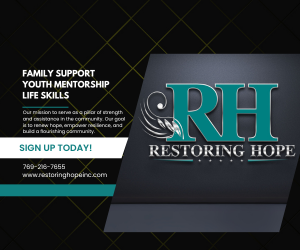Major Takeaways
HIV survivors still face stigma despite medical progress, with stories like Keith Green’s highlighting resilience and ongoing challenges.
Immigrant doctors play a critical role in U.S. healthcare but struggle against racism, visa restrictions, and systemic bias.
The healthcare system remains deeply influenced by social inequities, showing that progress in medicine doesn’t always erase prejudice.
Everyone Has A Status: The Fight To End HIV | Do Americans Have A Prejudice Against Immigrant Doctors?
You’re listening to Radio Health Journal, the trusted news source for medicine, science and
technology. I’m Elizabeth Westfield. I’m Mayan Vasta Betancourt.
And I’m Greg Johnson. This week, immigrant doctors are crucial to U.S. health care, but they’re
frequently disrespected. If they were working with white patients, often the white patient would
not respect their authority and would ask them to go find the real doctor.
But first, if we have so many effective tools to fight HIV, why is it still an epidemic? And I just
remember taking that train ride all the way back home and feeling like my life was over. My
very young 17-year-old life was already coming to an end. All that and more this week on Radio
Health Journal.
Shop the Sherwin-Williams Super Sale and get 40% off paints and stains September 19th
through the 24th. With prices starting at $29.39, it’s the perfect time to transform your space
with color. Whether you’re looking to revamp your interior or exterior, we have you covered
with bold hues, soothing neutrals, and everything in between.
Visit your neighborhood Sherwin-Williams store or shop the sale online. Delivery available on
qualifying orders. Retail sales only.
Some exclusions apply. See store for details. Y’all ready for Gillette’s best shave? Try Gillette
Labs.
With five ultra-thin blades, a built-in exfoliating bar, a precision trimmer on the back for sharp
lineups, Gillette Labs delivers that smooth shave. Plus, and check this out, with one refill, you’ll
get up to 30 shaves, and on average, the blades last 50% longer than Gillette Fusion. Got
something special coming up and you gotta look good? Check out Gillette Labs.
The best a man can get. Gillette Labs also available in heated. In 1994, Keith Green was in his
last year of high school, excited for whatever surprises the future had in store.
Maybe he’d go to college or move to a new city where he could make an impact. Green was
already an active member of his community and had been spending the last few months of his
high school career helping set up an annual blood drive. Initially wasn’t planning to donate
blood because I was a little scared of passing out.
Kind of a cool kid, I didn’t want people to see that, didn’t want to ruin my reputation. So I wasn’t
going to donate. However, my girlfriend at the time sort of convinced me that I had to.
You have to lead by example, that sort of thing. And so I did. A couple of weeks later, I got a
letter from LifeSource, who was the company who had done the blood drive for us, pretty much
suggesting that I don’t donate any more blood and that I make an appointment to come into
their offices.
It was a vague letter that left way too much room for Green’s imagination to run wild. He knew
sickle cell anemia runs in his family. Had they detected it in his blood? After they refused to give
Green any more information over the phone, he set up an appointment and hopped on the
train after school.
The woman sat me down and she basically just said, did you know that you were HIV positive?
And of course I didn’t know. I was in complete shock. I don’t remember a whole lot about the
rest of that interaction.
It was very like a blur, still a blur. I don’t remember a whole lot of it. But I do remember that she
gave me some information, some pamphlets, stuff like that to read and review.
And I just remember taking that train ride all the way back home and feeling like my life was
over. My very young 17-year-old life was already coming to an end. Human immunodeficiency
virus, or HIV, is an infection that weakens the immune system until patients are unable to fight
off any illness.
There’s no cure. And though we now have various treatments to help patients keep their
infection under control, that wasn’t the case in 1994. Average lifespan for people living with HIV
at that time was 8 to 10 years.
We didn’t have all of the medications that we have now. The Lazarus effect, if you will, wasn’t a
thing at that time. Protease inhibitors didn’t exist.
So I had no real reason to believe that I’d live longer than 8 to 10 years. Though there weren’t
many options, Green was able to go on three different drugs that he was prescribed to take a
couple times a day. And I remember that one of them was this sort of big, white, quarter-sized,
chalky pill that you had to take on an empty stomach.
And it tasted horrible. It was just absolutely disgusting. And I also remember just feeling
lethargic, nauseous, you know, not well.
And I started taking medications around the same time that I started my first semester of
college. I actually started at Columbia College. And it was just so dreadful that I just stopped.
It was a decision between Green’s mental health or his medication, a choice that stretched for
eight years before his doctor made sure Green knew it was becoming a choice between life and
death. When they drew my labs, I had a T-cell count of 30, and my viral load was well into the
hundreds of thousands. And so I was told at that time that, you know, if I didn’t get on
medications, it was likely I wouldn’t survive.
I had some friends who lived here and then moved to Charlotte, North Carolina. I moved to
Charlotte really because I didn’t want my family to witness what I was going through. I started
to lose a great deal of weight, was really sick for a period of time.
So I literally went there to die. Though he desperately needed medical care, Green says
accessing it was nearly impossible without insurance. To access the public health system there,
there was a phone number that you had to call between eight and nine in the morning.
That’s the only time you could call to get an appointment. And generally, those appointments
were, the available appointments for that day were gone before you got to nine o’clock. So I
had to go through several days of making an appointment.
And I remember when I finally was able to get an appointment, we were a couple of months
out. So it was just a nightmare trying to access health care in Charlotte, North Carolina.
Thankfully, a friend was able to help Green out, and he found a specialist who immediately put
Green back on a treatment plan.
But by this time, he had let the disease progress so far, there was still a chance he wouldn’t
make it. I was hospitalized for several weeks. You know, I’m 6’4″, average weight was at that
time about 190, 195 pounds.
I withered away to about 144 pounds and was literally at one point given six months to a year
to live. Against all odds, Green’s numbers began to turn around. Instead of a sure death
sentence, he once again began imagining a possible future.
The doctor handed him a copy of a magazine called Positively Aware’s 2002 HIV Drug Guide.
And Green began to map out his next steps. And I kind of made a pact with myself in that
moment that if I got back to Chicago, I would seek out this place because obviously there had
been all of these advances in medications that I didn’t know a whole lot about.
And people were living and I needed to, they had information that I needed to get. So I needed
to get there. Green did eventually end up back in Chicago and worked his way up the ranks at
the magazine, becoming an associate editor.
He went on to become a co-founder of the Chicago Black Gay Men’s Caucus, of which he is now
the executive director. The organization aims to end HIV by increasing health equity and
developing innovative programs. And though HIV.gov reports that cases dropped 12 percent
between 2018 and 2022, there’s still a lot of obstacles that prevention programs face.
Green says a main issue is stigma. It keeps people from ever having these important
conversations with their doctors. There’s still many medical professionals who don’t believe in
PrEP and stigmatize or shame folks for asking for it or using it.
I think that there’s a great deal of what we call slut shaming, where, you know, if folks are on
PrEP, they’re assumed to be promiscuous. And so then that also leads to the like, I’m not
promiscuous. I don’t need that.
Right. But any encounter could potentially put you at risk. And so it doesn’t matter whether
you’re promiscuous or not.
If you are sexually active, PrEP is something that is for you. One of the things we know is that
stigma is a big driver of why we haven’t gone to where we need to be. There’s a lot of stigma.
And until we end stigma, we can’t end HIV. That’s Dr. Toyin Nwafor, executive director of U.S.
HIV Medical Affairs at Gilead Sciences. She says that stigma can drastically reduce the number
of people getting tested and their willingness to continue care.
If they’re going into spaces where they don’t feel affirmed, they feel judged, they feel like
somebody sees me going to that clinic. Right. So then people stop taking their meds.
Stigma impacts somebody’s mental health and ability to stay on therapy. If you just keep
feeling like every time you take that pill, it reminds you of just how you felt the first time you
got that diagnosis. So stigma is such a big part.
So initiatives that normalize conversation, that normalize that we’re all HIV possible, that if
you’re sexually active, there are ways to prevent HIV, and that nobody cares about how you’re
having sex and who you’re having sex with. That’s your personal life and that’s your personal
choice. And that routinizing that conversation is what needs to happen.
If you’ve never gotten tested for HIV, you’re part of the majority in America. Despite the CDC
issuing guidelines in 2006 that everyone over age 13 should be tested at least once, only about
36 percent of adults have. Nwafor says part of the hesitancy has to do with how HIV testing
began.
Initially, right, with the first few cases of people living with HIV diagnosed, it was thought to be
only in certain risk groups, right, men who have sex with men or injection drug use. So some of
those initial tests and how health care providers thought was very located in certain
populations. That has changed clearly over the last three and a half decades.
But it’s taking people a long time to catch on, not just community, but also health care
providers. Nwafor says that the test has become more mainstream in certain cases. It’s become
a routine part of prenatal testing panels for pregnant women and for anyone wanting to take
HIV preventative medication.
But there’s still a big discrepancy between recommendations on what’s actually happening. And
there are many times when people who have been engaging in health care assume they’ve
actually had an HIV test. When they go in and say test me for everything, they assume that their
health care provider did it already.
So there’s still a lot of work to be done about why it’s not happening. And some of it has to do
with health care provider bias, comfort or discomfort in having the conversation where they’re
practicing. And that’s why the CDC took out risk based testing and just said if people are
sexually active, they should have an HIV test.
And that’s what’s going to happen. That’s the only way we’re going to kind of move forward
with getting it done. Which is why Nwafor believes that many of the HIV prevention initiatives
that focus on community outreach must also include the broader scope of health care
professionals.
For her and Green, the most effective message will educate the patients, doctors and
pharmaceutical companies. You have these innovative technologies that literally could prevent
someone from contracting HIV that just in 2025 still remain out of reach. With Gilead Sciences,
there’s been a commitment for, you know, 35 years now, right, to innovation in medication
discovery, right, not just in HIV, but also in viral hepatitis, right, a lot of curative therapy for
hepatitis, in oncology, right, in oncology, in liver disease.
But what’s clear is that medications and products don’t end epidemics. Programs do, right,
because a medicine is only as good as getting to the right person at the right time when they
need it, how they need to use it. Nwafor believes that public-private partnerships between HIV
advocacy groups and health care companies are the bridge between innovation and real life
impact.
The health care system and partnerships within the patient community and pharma and
academia and public health needs to come into play so that we can actually take interventions
and actually make them tangible and real for people who need them the most. You can find
more information about Dr. Toyin Nwafor, Keith Green and all of our guests on our website,
RadioHealthJournal.org. For more behind the scenes, follow Radio Health Journal on Facebook,
Instagram and Twitter at RadioHealthJournal. And I’m Kristin Ferra.
And I’m Elizabeth Westfield. And I’m Kristin Ferra. And I’m Elizabeth Westfield.
Coming up, how will current immigration policies impact America’s health care workforce?
When Radio Health Journal returns. I’m still going for it, even with higher stroke risk from atrial
fibrillation and a regular heartbeat not caused by a heart valve problem. Over a three year
study, Eloquus apixopan tablets reduced stroke risk better than warfarin.
And over 97 percent of Eloquus patients did not experience a stroke. A first stroke occurred in
2.9 percent of warfarin patients versus 2.3 percent of Eloquus patients. Don’t stop prescription
Eloquus without asking your doctor.
Stroke risk may increase. Eloquus can cause serious and potentially fatal bleeding. Don’t take if
you have an artificial heart valve, abnormal bleeding or antiphospholipid syndrome.
While taking, you may bruise more easily or bleed longer. A spinal injection increases blood clot
risk, which may cause paralysis. Get medical help right away for unexpected bleeding or
bruising or back pain, tingling, numbness, muscle weakness or incontinence.
Aspirin products, NSAIDs, SSRIs, SNRIs and blood thinners increase bleeding risk. Tell your
doctor about planned medical or dental procedures. Learn more at Eloquus.com or call 1-855
ELOQUUS.
Immigrant doctors play a crucial role in the U.S. health care system, serving patients in parts of
the country where there’s a shortage of doctors. These highly qualified medical professionals
from Southeast Asia and elsewhere have the same amount of training as American doctors, if
not more. They take the same exams as U.S.-trained professionals in order to receive their
accreditation or licensing to practice in the U.S. And yet many still are victims of racism and
other prejudices from their patients who question their skill and expertise.
If they were working with white patients, often the white patient would not respect their
authority and would ask them to go find the real doctor. There was another example of a
physician who was working with black patients and the black patients were judging his level of
medical knowledge and saying, oh, you’re from this land of snake charmers. And do you
actually know what you’re doing? And so I think that these physicians often from all sides would
experience these questions around their competence and their ability to do the work, which is,
you know, competence is coded for it’s a very racist kind of idea here.
That’s Iram Alam, associate professor of history of science at Harvard University and author of
The Care of Foreigners, How Immigrant Physicians Changed U.S. Healthcare. The number of
immigrant doctors in the U.S. is one in four. However, the ratio can be much higher in areas of
the country where there are physician shortages.
In rural hospitals, for example, it’s possible for 100 percent of physicians to be immigrants. But
regardless of the biases they face, these professionals work around it to give their patients the
best care possible. Some of that meant just kind of absorbing it.
Other times it meant figuring out different strategies for how they would speak to people or
address the patients. And often what it meant was just that over time there was a recognition
that this was the only physician that was available to people. And so there was almost a what
are you going to do? It’s either this or nothing.
Although some patients may choose to do nothing, Alam says more often than not, most
choose to see the foreign specialist. It’s a really complicated dynamic, especially because having
an encounter with a physician is such an intimate encounter. It’s such a vulnerable kind of
encounter.
So in some ways, I think that that I’m not sure if it makes it worse or if it makes it less bad in
that way. Like you’re coming from a place of actually really requiring this care and being
vulnerable to it as well. So I think it takes time.
I think it’s taken persistence on the part of immigrant physicians and their presence and having
to prove themselves and having to prove their competence often. But, you know, on their part,
it feels like it’s a well, a the conditions of their legal entry in the United States and also, I think, a
commitment to the profession and a commitment to providing care. The U.S. government has a
long history of recruiting foreign doctors to staff what are called health professional shortage
areas or HPSAs.
The practice started at the end of World War II and has continued ever since. Health profession
shortage areas are these designations that the federal government makes where there are
fewer than one physician for 3,500 people who live in those areas. And these designations can
be all over.
So they can be in rural communities, they can be in urban centers. But it just means that there
is an inadequate number of physicians to the populations. So these often are areas that are
impoverished, under-resourced, and they’re not attractive places that U.S.-trained physicians
would like to go and work because the conditions are, they’re difficult to work in.
Immigrant doctors who are here on a J-1 visa have to return to their home country for at least
two years after completing their training. To bypass this requirement, they can choose to work
full-time in an HPSA, medically underserved area, or medically underserved population for at
least three years. However, Allam believes that this practice of recruiting foreign doctors is
simply putting a bandage on a bigger problem.
She believes medical students should be cultivated from rural or underserved areas in the
hopes that they’ll return to serve their home communities. Otherwise, there’s no incentive for
doctors to want to practice there. Allam says another factor in these shortage areas is the cost
of medical school.
One of the reasons why I chose not to go to medical school and to go to Ph.D. school was I
didn’t come from a wealthy family. And the idea of taking on that much debt was too
overwhelming. And so what happens then is you end up getting these shortages.
Also, it’s shortage of specialties. So things like internal medicine, family medicine, pediatrics,
the specialties that are not as lucrative are the ones that immigrant physicians are often trained
in or are sent to go and receive training. And because U.S.-trained physicians, they want to
work in specialties where they can get paid more so they can also pay off their debt faster and
not be in these excruciating kinds of cycles of educational debt.
Allam believes the health care systems in Canada and the United Kingdom provide a more
judicial model that tends to limit doctor shortages to some degree. Physicians are salaried
government employees, part of the national health care system. And so the ways that they are
asked to move and work and that work is organized, of course, they still have shortages and are
dealing with similar kinds of issues.
But the distribution of how people are organized is different than it is in the United States,
where it’s really based on a much more, I mean, it’s a free market logic. And the ways that
people are compensated is based on their geographic proximity to other practitioners. That’s
how insurance allocates reimbursements.
This is not going to incentivize people to go and work in rural areas or under-resourced
hospitals in urban areas at all. For U.S.-trained physicians, for immigrant physicians, that’s
what’s available to them. And so they end up going there.
And though these physicians are working where no one else is willing to, they still face blatant
prejudice. Thankfully, Allum says celebrity doctors such as Abraham Verghese have helped to
dispel some of the implicit biases some American patients have toward immigrant doctors.
However, it’s possible that these physicians won’t be able to continue this custom.
The current immigration policies have created pretty big obstacles for international medical
graduates. Visa delays could drastically impact America’s workforce and, in turn, worsen many
Americans’ access to health care. These physicians and immigrant nurses and other kinds of
care workers in long-term care facilities are so vitally important to the functioning of the U.S.
health care system.
And the kinds of erratic and xenophobic immigration policies that are being enacted right now
are going to have a very adverse effect on the health of the U.S. population. Allum’s book, The
Care of Foreigners, How Immigrant Physicians Changed U.S. Health Care, is available now for
preorder. You can find more information about Iram Allum and all of our guests on our
website, RadioHealthJournal.org. For more behind the scenes, follow Radio Health Journal on
Facebook, Instagram and X. Our writer producer this week is Polly Hanson.
Our lead producer is Kristen Farrah. Our production manager is Jason Dickey. I’m Greg Johnson.
Radio Health Journal returns in just a moment. Oh, could this vintage store be any cuter? Right.
And the best part, they accept Discover.
Accept Discover? In a little place like this? I don’t think so, Jennifer. Oh, yeah, huh. Discover’s
accepted where I like to shop.
Come on, baby. Get with the times. Right.
So we shouldn’t get the parachute pants? These are making a comeback. I think we’re going to
have to wait a little bit longer. Discover is accepted at 99% of places that take credit cards
nationwide.
Based on the February 2025 Nielsen report. At Charmin, we heard you shouldn’t talk about
going to the bathroom in public. So we decided to sing about it.
Charmin Ultra Soft Smooth Tear has the same softness you love. Now with wavy edges that tear
better than the leading one-ply brand. Enjoy the go with Charmin.
Progressive knows if you have to choose between everyday life and your RV, RV wins. What are
you going to take the RV to the mountains or go pick up your dry cleaning? RV wins! Are we
cleaning the gutters or taking the RV camping? RV wins! Are we getting a new passport or
cruising up the coast? RV wins! Don’t forget, you got that trip to Sweden coming up. Oh, yeah.
Passport, then RV. With Progressive, you can bundle your RV with your home or auto and save
with a discount and spend more time enjoying those savings in your RV. Progressive Casualty
Insurance Company affiliates other insurers not available in all states and situations.
Oh, how’s that flu, babe? Did you take Dayquil Intense Flu yet? Nah, I got this. Okay, I don’t got
this. You stay on the couch and I’ll grab the Dayquil.
Undo your flu symptoms with Dayquil Intense Flu. Dayquil Intense Flu provides powerful relief
of your flu symptoms. I’m ready for that to-do list.
Wow, you do got this. Dayquil Intense Flu. The daytime coughing, aching, aching, fever, undo
your flu medicine.
Use as directed. Keep out of reach of children. Medical Notes this week.
Are you taking too many medications? In a review of nearly 2,000 older adults, about one in
three took five or more prescription drugs. These people had worse balance, weaker grip
strength and walked slower than their peers. Researchers believe it’s not necessarily the type of
drugs that are contributing to this difference, but simply the sheer number of them.
The research, published in the Journal of General Internal Medicine, supports the need for
physicians to consider a patient’s functional health when prescribing. Your blood may soon
have tiny robots flowing through it. Drugs administered through IVs aren’t often as precise as
they need to be, so researchers have found a solution.
Robots. These micro-devices are injected and then moved to a specific target area using
magnets. The scientists hope this will help patients get the most out of their medications.
The study is published in the journal Science Advances. We can detect more cases of
Alzheimer’s disease, so why aren’t we? New research shows that a majority of older Americans
understand why early detection is important, but only one in five have had a recent cognitive
screening. The numbers are even lower for Hispanic and Asian Americans.
These early screenings are important to help slow the disease as early as possible. The research
is published in Alzheimer’s and Dementia, Diagnosis, Assessment and Disease Monitoring. And
finally, a new fix for carbon monoxide poisoning.
Just over 1,000 Americans die from CO poisoning each year. Thankfully, a new protein-based
therapy helps the body rapidly get rid of the carbon monoxide through urine. The research is
published in the Proceedings of the National Academy of Science.
And that’s Medical Notes this week. I’m Maayan Vastabetancourt. Do Crohn’s disease or
ulcerative colitis symptoms keep coming back? Tremphaya, gaselkomab, may help, with rapid
remission achieved at 12 weeks and lasting clinical remission at one year.
Some even saw visible improvement of their intestinal lining at 12 weeks and one year.
Tremphaya is a prescription medicine used to treat adults with moderately to severely active
Crohn’s disease and adults with moderately to severely active ulcerative colitis. Serious allergic
reactions and increased risk of infections and liver problems may occur.
Before treatment, your doctor should check you for infections and tuberculosis. Tell your doctor
if you have an infection, flu-like symptoms, or if you need a vaccine. Healing is possible with
Tremphaya.
Approximately 3 out of 10 patients were in endoscopic remission at one year, based on areas
visualized on colonoscopy, which may not represent the deeper bowel layer or entire GI tract.
Individual results may vary. Ask your doctor about Tremphaya today.
Call 1-800-526-7736 to learn more or visit Tremphayaradio.com. Thank you for joining us this
week and every week as we break down the science stories you need to know. You can find all
of our past segments and guests on our website, radiohealthjournal.org, or wherever you listen
to podcasts. Follow us on Instagram, Facebook, and X for daily content.
And tune in next week for another edition of Radio Health Journal.














